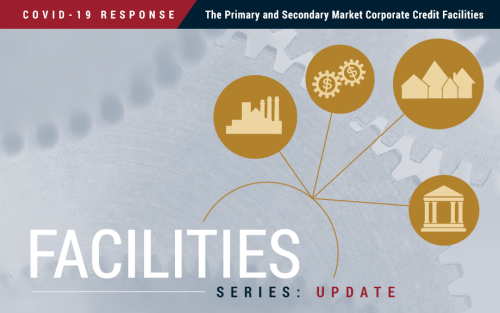COVID‑19 Has Temporarily Supercharged China’s Export Machine
How Have Households Used Their Stimulus Payments and How Would They Spend the Next?

In this post, we examine how households used economic impact payments, a large component of the CARES Act signed into law on March 27 that directed stimulus payments to many Americans to help offset the economic fallout from the coronavirus pandemic. An important question in evaluating how much this part of the CARES Act stimulated the economy concerns what share of these payments households used for consumption— what economists call the marginal propensity to consume (MPC). There also is interest in learning the extent to which the payments contributed to the sharp increase in the U.S. personal saving rate during the early months of the pandemic. We find in this analysis that as of the end of June 2020, a relatively small share of stimulus payments, 29 percent, was used for consumption, with 36 percent saved and 35 percent used to pay down debt. Reported expected uses for a potential second stimulus payment suggest an even smaller MPC, with households expecting to use more of the funds to pay down their debts. We find similarly small estimated average consumption out of unemployment insurance (UI) payments, but with somewhat larger shares of these funds used to pay down debt.
Weathering the Storm: Who Can Access Credit in a Pandemic?
Credit enables firms to weather temporary disruptions in their business that may impair their cash flow and limit their ability to meet commitments to suppliers and employees. The onset of the COVID recession sparked a massive increase in bank credit, largely driven by firms drawing on pre-committed credit lines. In this post, which is based on a recent Staff Report, we investigate which firms were able to tap into bank credit to help sustain their business over the ensuing downturn.
Are People Overconfident about Avoiding COVID‑19?
More than six months into the COVID-19 outbreak, the number of new cases in the United States remains at an elevated level. One potential reason is a lack of preventative efforts either because people believe that the pandemic will be short-lived or because they underestimate their own chance of infection despite it being a public risk. To understand these possibilities, we elicit people’s perceptions of COVID-19 as a public health concern and a personal concern over the next three months to the following three years within the May administration of the Survey of Consumer Expectations (SCE). This post reports results from these survey questions.
The Banking Industry and COVID‑19: Lifeline or Life Support?
By many measures the U.S. banking industry entered 2020 in a robust state. But the widespread outbreak of the COVID-19 virus and the associated economic disruptions have caused unemployment to skyrocket and many businesses to suspend or significantly reduce operations. In this post, we consider the implications of the pandemic for the stability of the banking sector, including the potential impact of dividend suspensions on bank capital ratios and the use of banks’ regulatory capital buffers.
Should Emerging Economies Embrace Quantitative Easing during the Pandemic?

Emerging economies are fighting COVID-19 and the economic sudden stop imposed by lockdown policies. Even before COVID-19 took root in emerging economies, however, investors had already started to flee these markets–to a much greater extent than they had at the onset of the 2008 global financial crisis (IMF, 2020; World Bank, 2020). Such sudden stops in capital flows can cause significant drops in economic activity, with recoveries that can take several years to complete (Benigno et al. 2020). Unfortunately, austerity and currency depreciations as enacted during the global financial crisis won’t mitigate this double whammy of capital outflows and policies to cope with the pandemic. We argue that purchases of local currency government bonds could be a viable option for credible emerging market central banks to support macroeconomic policy goals in these circumstances.
The Impact of the Corporate Credit Facilities

American companies have raised almost $1 trillion in the U.S. corporate bond market since March. Based on Compustat data, these companies employ more than 16 million people, and have spent more than $280 billion on capital expenditures in the first half of 2020, thereby supporting future economic activity. In this post, we document the contribution of the Primary Market and Secondary Market Corporate Credit Facilities (PMCCF and SMCCF) to bond market functioning, summarizing a detailed evaluation described in a new working paper. Improvements documented in an earlier blog post on the corporate facilities continued after the initial announcement as purchases began, and can be attributed both to the positive effects of Federal Reserve interventions generally as well as the facilities’ direct impact on eligible issuers in particular.
Did Too‑Big‑To‑Fail Reforms Work Globally?

Once a bank grows beyond a certain size or becomes too complex and interconnected, investors often perceive that it is “too big to fail” (TBTF), meaning that if the bank were to fail, the government would likely bail it out. Following the global financial crisis (GFC) of 2008, the G20 countries agreed on a set of reforms to eliminate the perception of TBTF, as part of a broader package to enhance financial stability. In June 2020, the Financial Stability Board (FSB; a 68-member international advisory body set up in 2009) published the results of a year-long evaluation of the effectiveness of TBTF reforms. In this post, I discuss the main conclusions of the report—in particular, the finding that implicit funding subsidies to global banks have decreased since the implementation of reforms but remain at levels comparable to the pre-crisis period.
The New York Fed DSGE Model Forecast—September 2020
This post presents an update of the economic forecasts generated by the Federal Reserve Bank of New York’s dynamic stochastic general equilibrium (DSGE) model. We describe very briefly our forecast and its change since June 2020.












 RSS Feed
RSS Feed Follow Liberty Street Economics
Follow Liberty Street Economics